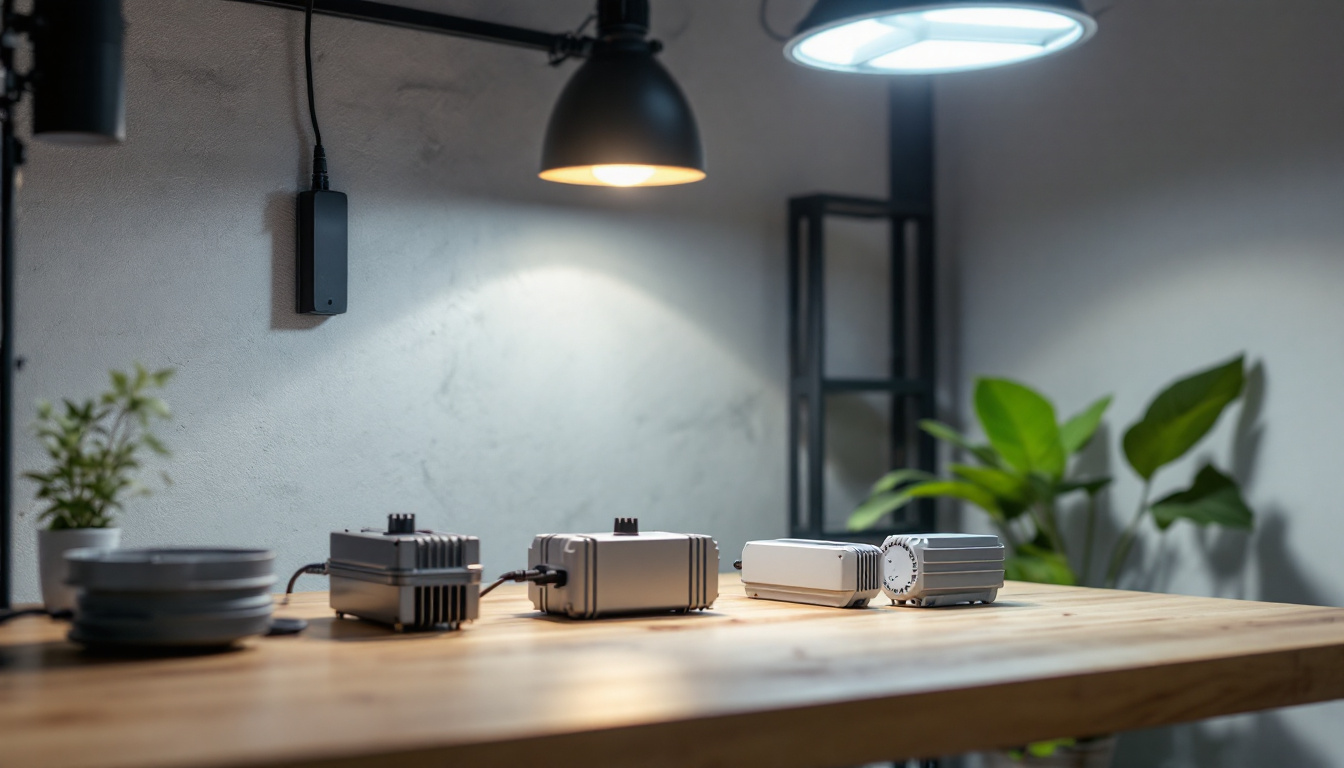In the ever-evolving world of lighting design, LED technology has emerged as a game-changer. As energy efficiency and sustainability take center stage, lighting contractors are increasingly turning to LED fixtures for their projects. This article delves into the insights shared by expert lighting contractors, exploring the benefits, challenges, and future trends of LED light fixtures.
LED, or Light Emitting Diode, technology has revolutionized the way we illuminate spaces. Unlike traditional incandescent or fluorescent bulbs, LEDs convert electricity directly into light, offering numerous advantages in both residential and commercial settings.
One of the most significant benefits of LED fixtures is their energy efficiency. LEDs consume significantly less power than traditional lighting options, which translates to lower energy bills for clients. Additionally, they have a longer lifespan, often lasting up to 25 times longer than incandescent bulbs. This longevity not only reduces the frequency of replacements but also minimizes waste, making LEDs an environmentally friendly choice.
Moreover, LED fixtures provide superior lighting quality. They are available in various color temperatures, allowing for customizable lighting solutions that can enhance the ambiance of any space. Whether it’s warm white for a cozy living room or cool white for a modern office, LEDs offer versatility that meets diverse design needs. Furthermore, the ability to produce bright, focused light makes LEDs ideal for task-oriented spaces, such as kitchens and workstations, where clarity and precision are paramount. This adaptability ensures that every area can benefit from optimal lighting conditions, enhancing both functionality and aesthetic appeal.
Despite their advantages, the transition to LED technology is not without challenges. One common issue faced by contractors is the initial cost of LED fixtures, which can be higher than traditional options. However, it is essential to consider the long-term savings on energy and maintenance costs, which often outweigh the upfront investment. In fact, many businesses have reported a return on investment within just a few years due to the significant reduction in energy consumption and the decreased need for frequent bulb replacements.
Another challenge is the compatibility of LED fixtures with existing dimming systems. Many older dimmers may not work efficiently with LEDs, leading to flickering or reduced performance. Contractors must be well-versed in the latest dimming technologies to ensure a seamless integration of LED fixtures into existing systems. Additionally, the rapid advancement of LED technology means that staying updated on the latest products and innovations is crucial. Newer models often come with enhanced features such as smart technology integration, allowing users to control their lighting through mobile apps or voice commands, further complicating the landscape for contractors who must navigate these evolving options to provide the best solutions for their clients.
When incorporating LED fixtures into a design, several factors must be considered to achieve the best results. Lighting contractors play a crucial role in guiding clients through these considerations to ensure optimal functionality and aesthetics.
color temperature is a critical aspect of lighting design. Measured in Kelvin (K), it influences the mood and functionality of a space. For instance, warmer temperatures (2700K-3000K) are ideal for residential areas, creating a welcoming atmosphere. In contrast, cooler temperatures (4000K-5000K) are better suited for workspaces, promoting focus and productivity.
Contractors should engage clients in discussions about their preferences and the intended use of the space to select the appropriate color temperature. This ensures that the lighting complements the overall design while meeting practical needs. Additionally, it’s important to consider how color temperature interacts with the colors of walls, furniture, and decor. For example, a warm light can enhance earthy tones in a living room, while a cooler light might bring out the vibrancy of a modern, minimalist design. By understanding these nuances, contractors can help clients create a harmonious environment that feels both functional and aesthetically pleasing.
The distribution of light is another vital consideration. LEDs offer various beam angles, which can significantly affect how light interacts with a space. Narrow beam angles are ideal for accent lighting, while wider angles provide general illumination. Understanding the purpose of each area will guide contractors in selecting the right fixtures and their placement.
Strategically placing fixtures can enhance the overall design and functionality of a space. For example, in a kitchen, under-cabinet lighting can illuminate work surfaces, while pendant lights over an island can create focal points. Contractors should assess each area’s unique requirements to optimize lighting placement. Moreover, the height at which fixtures are installed can also influence light distribution; higher fixtures may create a softer, more ambient glow, while lower fixtures can provide more direct lighting. Incorporating dimmers can further enhance versatility, allowing clients to adjust the lighting to suit different activities or moods throughout the day. This attention to detail not only improves the usability of the space but also elevates the overall design aesthetic, making it more inviting and functional.
The landscape of LED lighting is continuously changing, with new trends emerging that reflect advancements in technology and shifts in consumer preferences. Staying updated on these trends is essential for lighting contractors aiming to provide cutting-edge solutions.
Smart lighting is one of the most significant trends in the industry. With the rise of the Internet of Things (IoT), homeowners and businesses are increasingly seeking lighting systems that can be controlled remotely. Smart LED fixtures allow users to adjust brightness, color, and timing through mobile apps or voice commands, offering unparalleled convenience and customization.
Contractors should familiarize themselves with various smart lighting products and their compatibility with existing systems. This knowledge enables them to recommend solutions that enhance user experience while providing energy savings. Additionally, smart lighting can integrate with other smart home devices, such as security systems and thermostats, creating a cohesive ecosystem that enhances overall home automation. As consumers become more tech-savvy, the demand for these integrated solutions is likely to grow, making it essential for contractors to stay ahead of the curve.
Another emerging trend is human-centric lighting, which focuses on the impact of light on human health and well-being. Research has shown that exposure to natural light and appropriate color temperatures can improve mood, productivity, and sleep quality. Lighting contractors can leverage this knowledge to create environments that promote wellness.
Implementing human-centric lighting involves understanding the circadian rhythm and designing lighting systems that mimic natural light patterns throughout the day. This approach can be particularly beneficial in workplaces and healthcare facilities, where optimal lighting can enhance performance and recovery. Moreover, the use of tunable white LEDs allows for the adjustment of color temperature throughout the day, simulating the natural progression of sunlight. This not only helps in maintaining alertness during working hours but also aids in winding down during the evening, thus supporting better sleep hygiene. As awareness of the importance of mental and physical health grows, the demand for human-centric lighting solutions is expected to rise, presenting a valuable opportunity for contractors to differentiate their services in a competitive market.
To successfully navigate the complexities of LED lighting, contractors should adopt best practices that enhance their expertise and client satisfaction. These practices not only improve project outcomes but also build a solid reputation in the industry.
Continuous education is vital in the rapidly changing lighting industry. Contractors should attend workshops, webinars, and industry conferences to stay updated on the latest technologies, products, and design trends. Engaging with manufacturers and suppliers can also provide valuable insights into new offerings and innovations.
Additionally, obtaining certifications in LED lighting design and installation can enhance a contractor’s credibility and skill set. This commitment to professional development demonstrates a dedication to quality and excellence in service delivery. Furthermore, staying abreast of energy efficiency regulations and sustainability practices is crucial, as more clients are seeking eco-friendly solutions that not only reduce energy costs but also minimize environmental impact.
Successful lighting projects hinge on strong client relationships. Contractors should prioritize open communication, actively listening to clients’ needs and preferences. Understanding their vision allows contractors to tailor solutions that align with their expectations.
Providing clients with detailed proposals, including lighting layouts and fixture specifications, fosters transparency and trust. Regular updates throughout the project ensure clients feel involved and informed, enhancing overall satisfaction with the process. Moreover, following up after project completion can solidify these relationships; soliciting feedback and offering maintenance tips not only shows commitment to client satisfaction but can also lead to referrals and repeat business. Establishing a network of satisfied clients is invaluable in a competitive market, as word-of-mouth recommendations can significantly influence potential customers’ decisions.
LED technology has transformed the lighting industry, offering numerous benefits that lighting contractors can leverage to enhance their projects. By understanding the intricacies of LED fixtures, staying informed about trends, and adopting best practices, contractors can position themselves as experts in the field.
As the demand for energy-efficient and sustainable lighting solutions continues to grow, embracing LED technology will be crucial for contractors aiming to meet client expectations and contribute to a greener future. With a commitment to quality, education, and client relationships, lighting contractors can thrive in this dynamic industry.
Ready to elevate your lighting projects with the efficiency and sustainability of LED technology? At LumenWholesale, we provide lighting contractors like you with the highest quality, spec-grade LED fixtures at unbeatable wholesale prices. Say goodbye to inflated markups and hello to a vast selection of reliable, high-performance lighting solutions that meet the strictest industry standards. Plus, with free shipping on bulk orders, you can enjoy premium lighting at the best value — all without hidden fees or compromises. Don’t miss out on the perfect blend of quality, affordability, and convenience. Explore our wholesale lighting options now and bring your lighting designs to life.

Discover the essential tips and insights for lighting contractors in selecting the perfect flashing light bulbs.

Discover the importance of used lighting solutions for contractors in this insightful article.

Discover the essentials of single pole switches and explore innovative cost-saving strategies tailored for lighting contractors.

Explore the essential role of ballasts in modern lighting solutions, uncovering how they enhance efficiency, extend bulb life, and contribute to sustainable illumination practices.